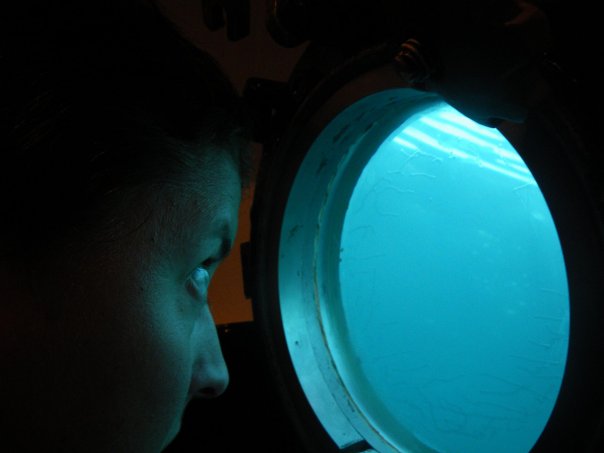
Craveology Cafe and the North Star Science Store are temporarily closed for renovation.

by Melissa T. Miller
When you think about ocean science, what do you picture? If you’re basing that image on what you’ve seen in movies or on TV shows, you may think that every scientist wears a wetsuit and goes scuba-diving. Or, that sharks lurk outside research stations submerged in the crystal-clear water and something is—cue ominous music—probably going to go wrong! Onscreen scientific pursuits are often exaggerated or wrong, and those who work in ocean science have plenty of reasons to groan when they see themselves misrepresented onscreen.
Ocean science covers so many fields and calling all of them oceanography is an over-simplification. Would you ever call it “land science”? Probably no, so let’s get more specific. There’s biological oceanography, popularly known as marine biology, which covers all the plants and animals in the ocean, how they interact with each other and their environment. Chemical oceanography is the study of the elements on the periodic table, how they interact with each other and the whole ecosystem.
There’s also geological oceanography (volcanoes, sediments, paleontology). And physical oceanography (tides, currents, waves), which also covers the study of the interaction between the ocean and Earth’s atmosphere, as well as climate variability. There are dozens of fields within each of these categories and most researchers specialize in just one small piece of the puzzle, which makes it likely that someone who studies nutrients in the deep ocean knows just as much about sharks as you do, and a shark biologist may not know anything about the East Australian Current—unless they watched Finding Nemo, of course.
In fact, you may know a lot more about the ocean than you realize. Like that it covers over 70% of the Earth’s surface or that storm patterns are changing across the world because of warmer ocean temperatures. Maybe you’ve seen maps of the migration of whales from Hawaii to Alaska thanks to GPS tags or know that plastic pollution harms everything from microscopic animals to whales to birds, all of which rely on healthy oceans.
Very few topics like these are shown in the movies or on TV. Instead, as in The Life Aquatic, most fictional teams only include a few people and they are usually wearing wetsuits. In fact, very few ocean scientists get into the ocean to do their research. Sure, there are real-life scientists who work on small boats in tropical blue water and their uniforms are bathing suits, but they also spend time in labs and offices. And, even though it’s not “nail-biting action” for an audience, a lot of researchers’ time is spent in front of a computer, working with their data and applying for research grants to cover their expenses.
The research submersible Alvin, which belongs to Woods Hole Oceanographic Institution. Unlike in The Meg, this untethered sub can only go to depths of 4,500 meters (that’s almost 3 miles). The pressure underwater allows for just a small porthole and data is transferred via sound waves back to the support ship, which receives time-delayed low-resolution images and audio.
While small teams do exist, generally science involves a lot of people. In those remote research stations that Hollywood loves to show, that includes support roles like pilots, maintenance workers and kitchen staff. Some oceanographers spend months of their lives at sea on research vessels working around the clock to collect samples and data, with no weekends or port stops, and their missions would fail without the ship’s crew taking care of their needs and keeping them safe.
Another thing that is not representative of this field, is to show a full team of scientists who look similar and where everyone speaks perfect English—science is global! One movie that got that aspect right is The Meg. In this movie, the team is made up of people from many different countries and cultures and they’re working a variety of jobs. Without giving many of the character lines, because we don’t have all day, the movie shows people in supporting positions such as lab technicians, equipment operators, safety personnel and construction crews. Multiple languages are spoken and written. It may seem odd to congratulate a movie about extinct man-eating sharks on its accuracy to reality, but this is an important aspect to get right. So, while they may be cruising around the deepest part of the ocean in an untethered submarine with live video feeds and bio-monitors (not at all realistic), at least it’s a diverse team doing it.
There seem to be very few movies involving the ocean that aren’t also disaster movies. As the saying goes, “At the start of every disaster movie, there’s a scientist being ignored.” So, while scientists seem to get caught up in dangerous situations all the time according to popular media, those studying the ocean seem, particularly at risk. Hollywood writers can be forgiven their flair for the dramatic since that is indeed what sells, but shark attacks, storms, aliens, shipwrecks and any manner of other catastrophes are thankfully few and far between. Perhaps no one would choose to watch two hours of scientists uneventfully going about their work, but it’s comforting to know that’s what happens most of the time.